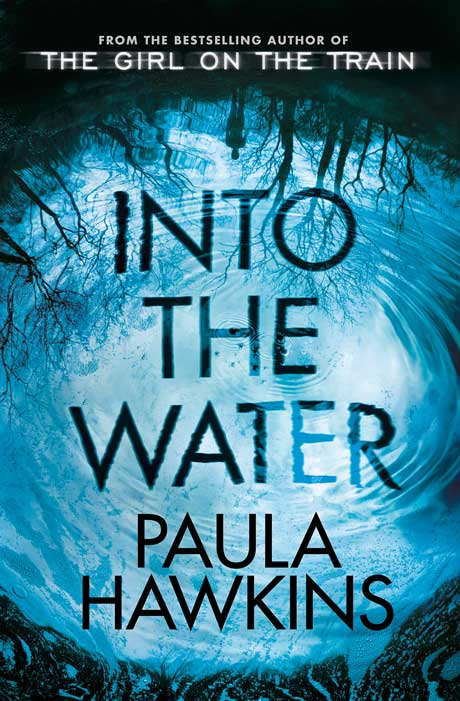If The Girl on the Train seemed overplotted and confusing to some readers, it is a model of clarity next to this latest effort. Into the Water is set in the rural British town of Beckford, an extremely unhealthy habitat for women. Beckford has cliffs, a bridge, a river and a drowning pool. It also has a long history of women falling off, stepping into or otherwise dying via any of the above.
Into the Water |
By Paula Hawkins, Riverhead Books, 386 pages, $28 |
Libby, murdered by men in the prologue, turns out to be an accused witch from the 17th century. But Hawkins starts with just the spookiness, withholding the date and the full, pointless story for a long time.
The rest of the novel takes place over the course of one month, August 2015. Hawkins plagues little Beckford with contemporary watery deaths, grieving about other watery deaths and the discovery of a manuscript about the town’s history of watery deaths. Her goal may be to build suspense, but all she achieves is confusion. Into the Water is jam-packed with minor characters and stories that go nowhere.
What happened to the Paula Hawkins who structured The Girl on the Train so ingeniously? That book, and the ensuing movie starring Emily Blunt, used a cleverly devised unreliable narrator, focused on interrelated couples, revealed all its characters to be untrustworthy and came close to bursting at its seams. But that story radiated sheer serenity compared with the three-ring circus that Into the Water becomes.
The new one properly begins in 2015 with the death of Nel Abbott. (Make a chart. A big one.) Nel was the mother of 15-year-old Lena, whose best friend, Katie Whittaker, died in the water only a few weeks earlier. Nel has a chilly estranged sister, Julia (known as Jules), who’s been gone so long she doesn’t know her niece Lena, but now comes back to town to impose her presence on the orphaned girl. Lena has no idea who her father was. But he must have been a man and therefore likely a terrible monster. Every man in Into the Water has the potential to be one.
Louise Whittaker, Katie’s mother, walks the path beside the river daily as she mourns her daughter. Patrick Townsend, the oldest man in the book, is a frequent walker too. There’s more walking here than in the average Jane Austen novel, and not much else to do in Beckford. We do learn that it’s possible to buy milk and a newspaper somewhere, but everyone seems most drawn to the sinister, wet, lethal outskirts of town.
Patrick is the father of Sean Townsend, a detective assigned to look into Nel’s death. Sean has his own traumatic history involving a drowned Beckford woman, but nobody thinks to bring it up before he’s given the case. Sean’s partner is Erin Morgan, who likes to run on the riverbank and does her best not to wonder what kind of crazy place this is. And Sean is married to but separated from Helen, head of the local school, who knew a lot about Katie and Lena’s friendship. A teacher on Helen’s staff, Mark Henderson, knows all the local teenagers, has had enough of the school system and would dearly love to get out of town.
Finally, and why not, there’s the psychic. Her name is Nickie Sage and she looks and dresses like a goth witch. She knows a lot more than the police do about Beckford’s endless parade of secrets.
Hawkins does not so much introduce these characters as throw them at the reader in rapid succession. There’s no time to process who’s who, and not much detail about any of them. The writing doesn’t help: Nel’s high school boyfriend (not even mentioned above) is “tall, broad and blond, his lips curled into a perpetual sneer.” One detective describes Beckford as “a strange place, full of odd people, with a downright bizarre history.” So much for prose. As for dialogue, Jules actually leans over Nel’s corpse and whispers: “What did you want to tell me?”
Many of us are going to read this novel anyway. Hawkins could have published a book of 386 blank pages and hit the bestseller lists. So on the bright side for those who insist: A few of the book’s many killings happen for unexpectedly powerful reasons. The one that occurs in 1920 delivers a particularly strong shock. And even though Hawkins does a lot of needless obfuscating just to keep her story moving, she blows enough smoke to hide genuinely salient clues. “Clues” isn’t quite the right word, since nobody in this book behaves logically, schemes cagily, has legitimate motives or relies on any sane staples of the murder story.
Into the Water chugs off to a slow, perplexing start, but it develops a head of steam at an unlikely moment. It has exactly one smart, perfectly conceived Hitchcockian page: its last.
–New York Times News Service











